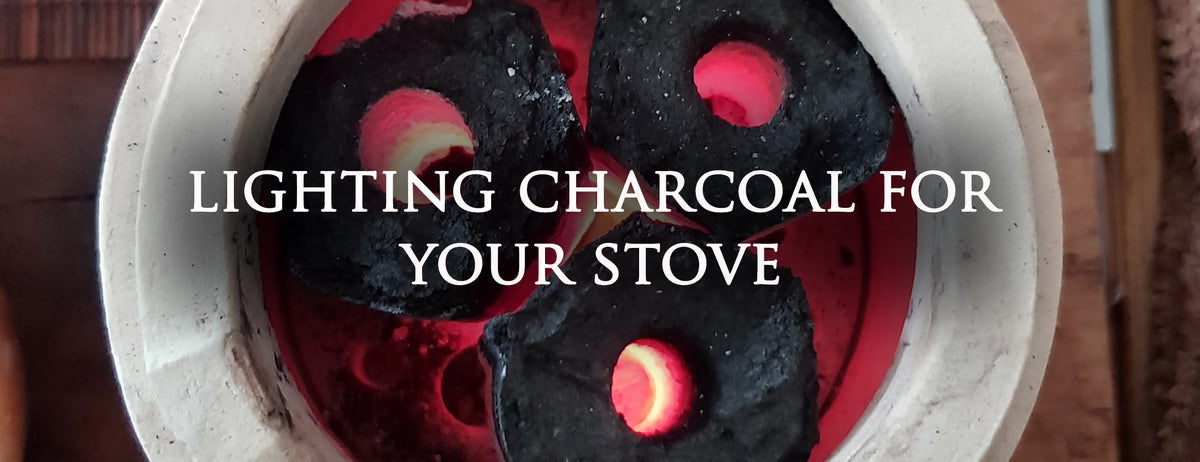Ceramic Stove and Kettle Essential Tips
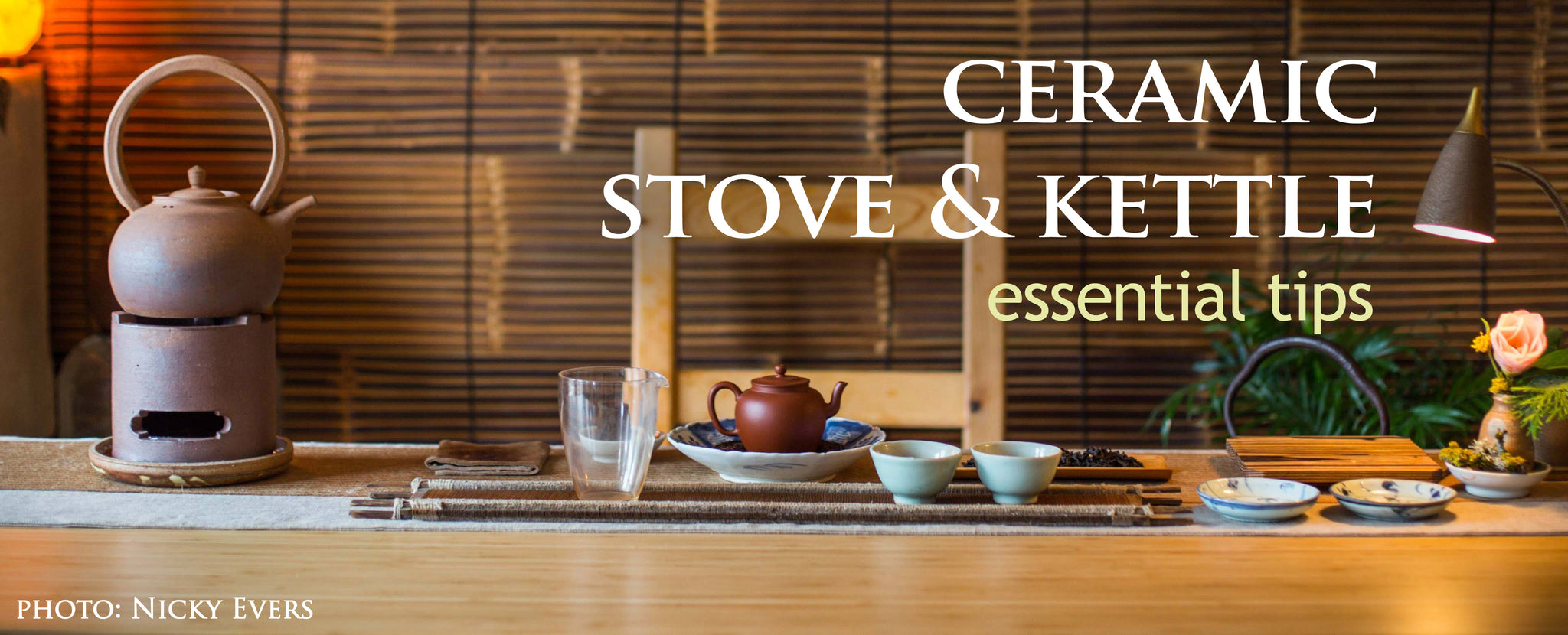
A ceramic stove and kettle are really special and exciting pieces of teaware to own and use. Heating water in clay adds a special quality to the art of making tea. It also benefits the flavor and texture of the water. The warm orange glow from a charcoal stove creates a unique and tranquil tea experience.
These special qualities are the reason many dedicated tea drinkers in Asia exclusively use charcoal for boiling water for tea. In western countries, people rarely experience the charm of charcoal boiled water. In this post I'll give you some practical tips for getting started in creating a unique tea experience.
With most stove and kettle sets from The Jade Leaf, you have the option of using charcoal for boiling, or an alcohol burner for keeping water hot.

Charcoal
Good quality charcoal is essential. As long as you have some ventilation, there is no problem burning good quality, clean charcoal indoors. Make sure to keep a window cracked to allow fresh air into the room. Commonly used charcoals are Longan wood, binchotan, bamboo and olive pit charcoals. Certain types of "green charcoal" also provide clean, smokeless, easy to use alternative to hardwood charcoals. Green charcoal is compressed charcoal made from sawdust. It is pressed into hexagonal rods and has a hollow core. Any good quality locally available hardwood charcoal may be worth trying. First test it outdoors first to see if it burns clean and smoke free.
Do not use regular BBQ charcoal briquetes, they are smoky, create an offensive odor and are potentially toxic since they often contain coal.
click here for tips on how to light charcoal.
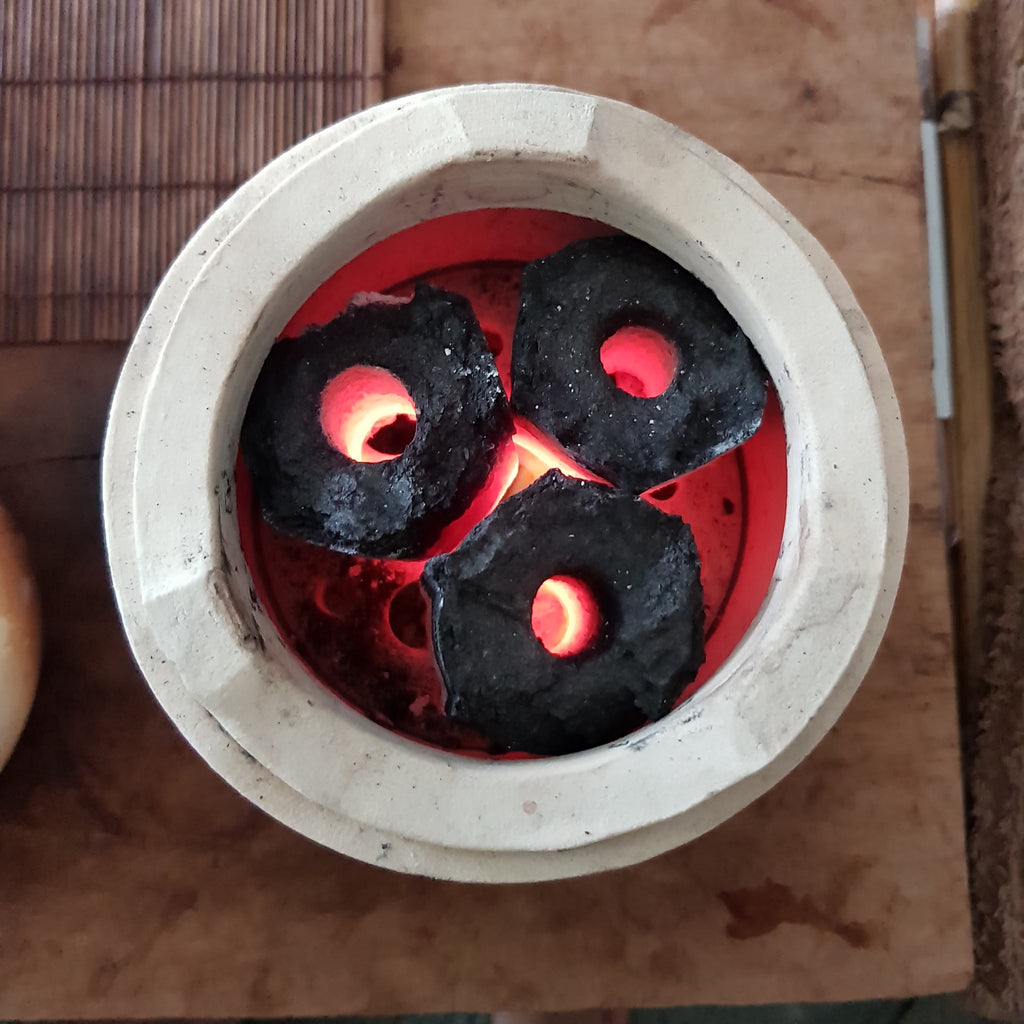
Special care for clay kettles
One of the most important things you can do to prolong the life of your kettle is to avoid thermal shock. Thermal shock is caused by exposing a clay kettle to drastic temperature differences. Special precautions should be followed to protect your clay kettle and stove so that they may provide you with many years of service. Here are some situations to avoid, that are likely to cause thermal shock and kettle breakage:
- Adding cold water to a hot kettle.
- Adding boiling water to a cold kettle when the weather is cold
- placing a hot kettle on a much cooler surface, ie. a tile, stone, metal or glass surface.
- exposing the kettle to a strong heat source ie. any kind of burner that is at high heat.
- Exposing your kettle to thermal shock could shorten the lifespan of your kettle by causing it to crack. Certain kettle are more resistant to thermal shock for various reasons. Our clay has been thoroughly tested by exposing test pieces to extreme thermal shock to test its durability. Our current clay blend and design has also bee tested through regular use.
The best way to protect your kettle is by avoiding drastic temperature changes in the kettle compared to the external environment.
Tips and precautions
- Always make sure there is a minimum of 1 inch of water in the kettle at all times. Never put the empty kettle over the fire.
- Only use the kettle over a charcoal or alcohol flame. Other sources of heat such as a gas or electric burner can cause sudden heating that may crack the kettle.
- It's best to fill the kettle to about 80% full. If it's overfilled, boiling water will spew out from the kettle.
- When you’re finished using the kettle pour out any remaining water. If water is left in the kettle may seep out from the pores in the clay.
It sounds like there's a lot to remember. Once you get used to it, all of these things will become second nature and you can feel at ease when using your kettle and stove. Making tea without electricity is a skill that takes some practice to develop. I recommend using it often for a period of time until you feel comfortable with it.
ALCOHOL BURNER
The alcohol burner is good for keeping already boiled water hot. It’s best to have another kettle with boiling water going to keep your clay kettle topped up with boiled water. Using preheated water with the alcohol burner is the way to go for a simple setup that provides the good taste and texture of water heated in a clay kettle.USING CHARCOAL
Charcoal is our favorite way to boil water. Using charcoal to boil water is a special skill of its own. It will take time and practice to develop your skill. For me it has been a lot of fun and it adds another dimension to my tea making.The charcoal you use is very important. We recommend using good the best quality hardwood charcoal you can find. For more information on how to light charcoal for your stove please refer to this article, Lighting Charcoal for your Stove
I hope this information helps you get the most out of your clay stove and kettle set. Please post a comment below if you have any questions or get in touch at thejadleaftea@gmail.com.
-Emilio
Leave a comment
Comments will be approved before showing up.
Also in News
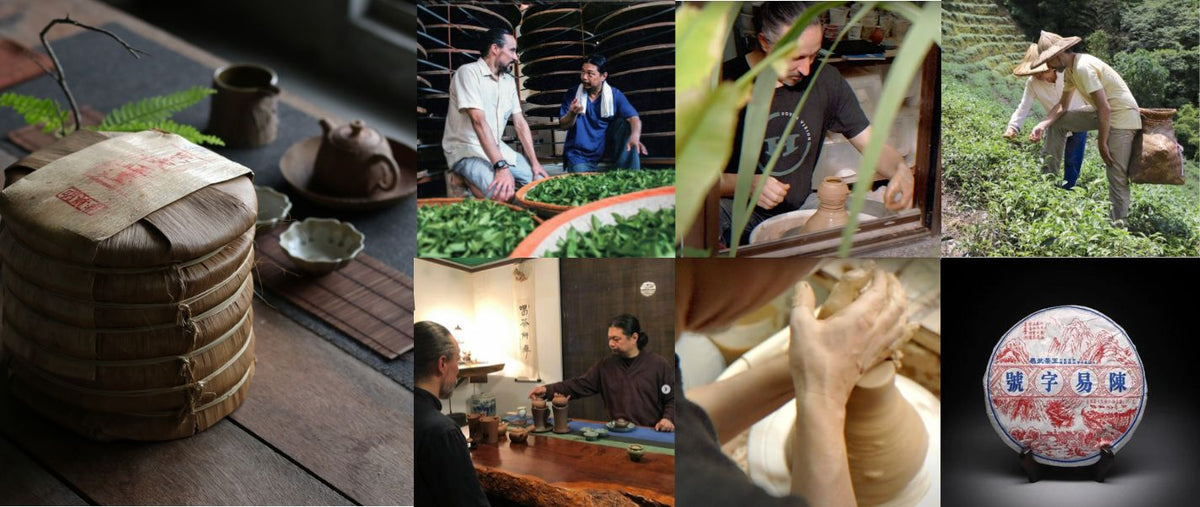
Sourcing and pricing
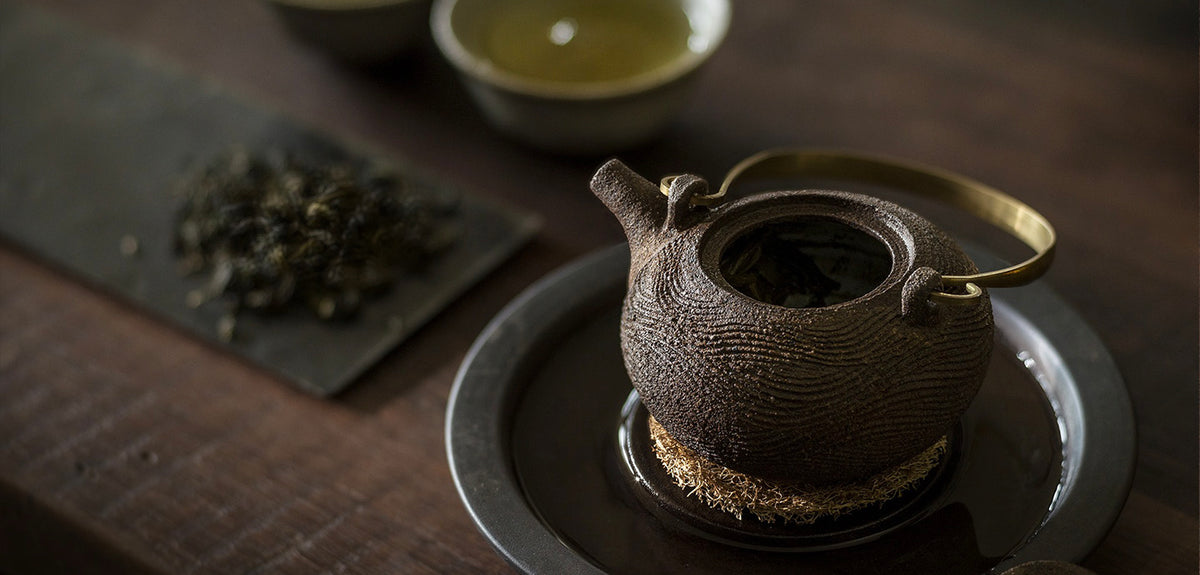
Modern, eco-friendly & Sustainable
